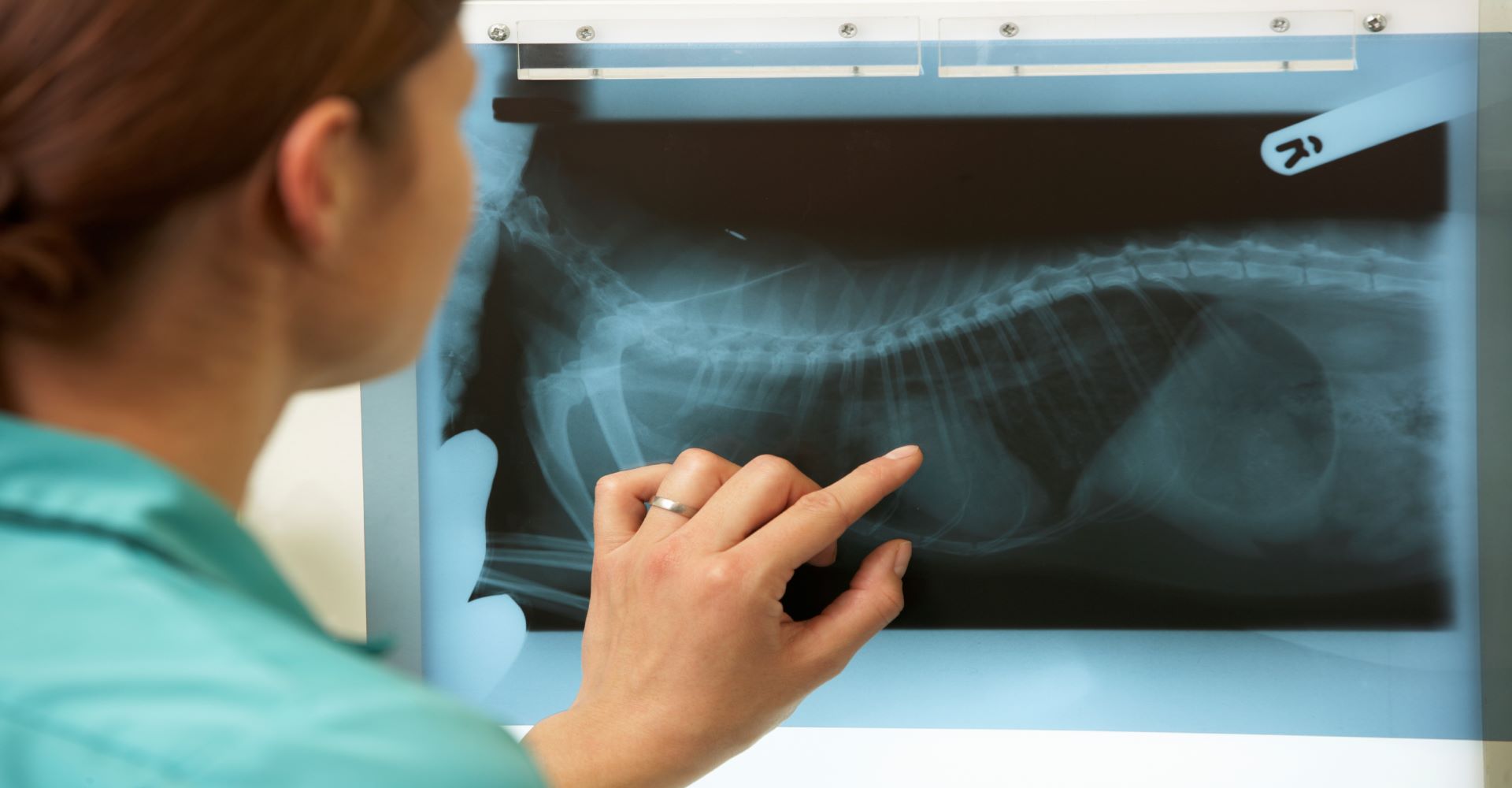The Role of Veterinarians in Helping Honeybees: 3 Things You Can Do
We'd be in real trouble without pollinators, and it's veterinary medicine's job to take care of them. How can veterinary professionals do their...
3 min read
Abby Crimm : June 27, 2019 11:02:05 AM PDT

Looking to enhance your radiology skills? Dr. Jay Griffin talks about how radiology can help improve patient care and generate revenue for your practice.
Radiology is an integral part of veterinary practices everywhere. Dr. Jay Griffin, a board-certified radiologist, talks to Dr. Natalie Marks about the basics of radiology and how it’s used in everyday veterinary practice in the Quick Cup of Knowledge video, “Radiology.”
Dr. Marks suggests that a challenge for some recently graduated veterinarians is feeling confident about how to interpret radiographs and implement ultrasound in practice. Luckily, with a little training and effort, it can become one of your practice’s strengths as radiology technology improves patient care and generates revenue.
Improve Care
As radiology technology is constantly improving to become more accessible, it has allowed veterinarians to diagnose problems more thoroughly and accurately. Now, imaging technology like ultrasound machines can be as small as a briefcase, and you can receive images on tablets or other handheld devices, making it highly accessible and efficient.
The technology isn't just accessible; it's also versatile. Although often associated with examinations of the abdomen, the usefulness of radiology is never confined to just the abdomen. Using various imaging technologies can give valuable insight into potential problems relating to the eye, thyroid, cervix, patellar ligament, mediastinum, and many other areas.
One basic scan that exemplifies how imaging can be an effective way to improve patient care is the FAST scan. A FAST (Focused Assessment with Sonography for Trauma) scan assists in the diagnosis of problems like a peritoneal effusion, and it has important clinical ramifications, whether it’s a trauma case or an acutely lethargic case with an abdominal mass.
Plus, a FAST scan is relatively easy to do. Dr. Griffin describes how there are well-defined windows where the fluid tends to be most apparent and easy to identify. In most cases, you will also be able to determine the site most likely to give a successful sampling of the effusion. This not only aides in efficient and effective diagnosis but then also guides your treatment process going forward.
Generate Revenue
Still not sure about the advantages of investing in imaging equipment? Or perhaps you are a veterinarian whose manager or medical director isn’t too keen on implementing this new technology?
One effective talking point is the fact that radiology not only elevates the care you are able to give your patients; it also generates revenue and leads to other procedures that generate revenue.
If you can correctly diagnose an abdominal mass with ultrasound, for example, it often leads to the need for a surgery. Many times, Dr. Griffin says, when you perform scans of the full abdomen (a more advanced scan), you’re likely to find more than one issue that is clinically significant—including those you weren’t originally looking for and couldn’t be detected in the patient’s lab work.
This ability to identify previously unknown problems and move forward with further treatment opens the door to additional opportunities for your practice and boosts your reputation for expert care.
Hands-On Experience
A key point that Dr. Griffin touches on is that there is no substitute for hands-on experience. Developing the skills you need to implement radiology technology to its fullest potential can be frustrating at first because of the time and practice it takes—and you can’t learn it from a book.
For example, Dr. Griffin says that between the four or five techniques he uses to find the left adrenal gland in a dog, the technique he chooses greatly depends on the dog. You get that kind of insider knowledge by sitting down with an imaging machine alongside an expert to guide you.
Find a lab that gives you first-hand experience, Dr. Griffin says. It’ll be invaluable knowledge you can bring back and immediately implement in your daily practice to improve patient care and generate revenue—that way, everyone wins.
Learn about upcoming courses like the basic, intermediate, and advanced abdominal ultrasound courses offered at WVC to get the hands-on experience that Dr. Griffin recommends.
Stay in the Know!
Click the link to subscribe to our YouTube channel or check out our WVC Resource Library full of great podcasts, videos, and digital downloads!
Disclaimer
Content may contain advertising and sponsorships. Advertisers and sponsors are responsible for ensuring that material submitted for inclusion is accurate and complies with applicable laws. We are not responsible for the illegality or any error, inaccuracy or problem in the advertiser’s or sponsor’s materials.
Advertising and sponsorship material and/or opinions are not are not a reflection on Viticus Group.

We'd be in real trouble without pollinators, and it's veterinary medicine's job to take care of them. How can veterinary professionals do their...

Dental issues are common in small animal practices, but some veterinarians may wish they knew more about dental health and procedures. Dr. Brook...

Being a veterinary oncologist is extremely rewarding. With Dr. Sue Ettinger's advice and a bit of optimism, telling a client about their pet's...